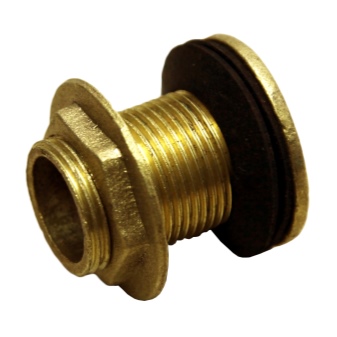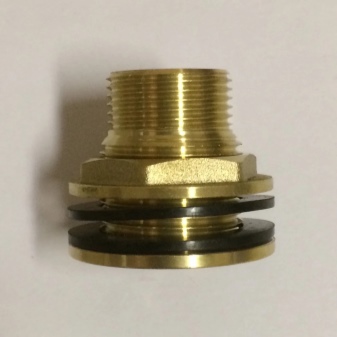Features of tapping into barrels and their installation

Cutting a pipe into a barrel, canister or cistern simplifies and accelerates the daily watering of a garden or vegetable garden by an order of magnitude. The owner of the summer cottage is relieved of the need to tilt and move the barrel, carry water in a watering can, making several kilometers of path in just one session of watering the plants. But how to make the sidebar correctly - this is described in the article.


Description and purpose
The tap into the barrel solves the main problem: it allows water to flow out of the tank through the pipeline without loss. Water flows from the barrel by gravity into the container below or directly to the watering point.


You need to cut the pipeline into the barrel either into the bottom or into the lower part of its wall. Sealing the joint with a gasket prevents water leakage. The outlet pipe should run horizontally with a slight slope to the irrigation site, and, if necessary, it can have several turning or lowering bends. The fitting, which is the main part of the tie-in, must be selected so that it is suitable for both the pipe and the hose (this depends on the irrigation system used).
What are they?
Pipe fittings are made in the form of plastic or bronze (brass) construction. Plastics, such as PVC, are gradually being replaced by metal products. The plastic fitting has a number of advantages: low price, light weight, resistance to oxidation by water and air. The disadvantage of most types and varieties of plastic is that it is destroyed after several years of active use under the influence of ultraviolet rays of the sun.
For the manufacture of plastic fittings, taps and pipes, in addition to PVC, high-density polyethylene (HDPE) is used.


The production of fittings is designed for the following pipe diameters: 1/2, 9/16, 5/8, 3/4, 7/8 ", as well as 1". It makes sense to install a fitting for a larger pipe diameter in cases where the barrel or tank has a volume of more than 1000 liters, which ensures the simultaneous irrigation of several hundred parts of the area along which several secondary pipelines adjacent to the main pipe are wired. For drip irrigation, a much smaller diameter of the nozzle is suitable, since with such irrigation water flows in a common pipe at a relatively low speed, and its consumption is low.

Bronze and brass fittings are used mainly due to a significantly longer service life than plastic counterparts. The fact is that brass is very resistant to oxidation, so products made from it are able to work for a very long time in high humidity conditions. Unlike copper ones, which quickly become covered with a loose green coating, brass fittings work even in conditions of constant splashes and water leakage.
For stable retention in the place of its fixation, the union must necessarily rely on a locknut made of plastic or metal. The plastic nipple can be supplemented with a metal lock nut - and vice versa.
A metal or plastic pipe coming out of the nozzle in the direction of the place where the water is used is successfully used in the country not only for watering plants, but also for a shower. In winter, a plastic irrigation barrel is used as an expansion tank for the heating system. In turn, it works on the principle of gravity - without artificially creating increased pressure.

Metal drums (eg made of stainless steel) are combined with all-plastic and non-ferrous metal fittings. It does not matter which fitting is used - plastic or metal - the main task is to ensure the tightness of the entire structure, excluding any leaks. The main sealant is rubber and sealant (rubber-forming adhesive). Previously, tow was also widely used. The cut-in pipe must enter the side wall of the barrel at a right angle, since a slightly modified design of the union and gaskets would be required for the angle pipe.

How to install?
First you need to purchase the following set of parts, not counting the barrel:
- fitting with a set of gaskets and nuts;
- adapter (if there is a pipe of a different diameter, but there was no suitable fitting on sale for it).
A barrel (canister, cistern) for water must be pre-installed above the level of a person's head - at a height of at least 2 m. Due to the large weight, after filling with water, the container must be placed on supports installed on a reinforced foundation. If there is a shortage of territory adjacent to a house or a summer cottage, a water barrel is installed on the attic floor. If the installation level of the barrel is too low - for example, on the floor - the system will need an additional pump that pumps water for irrigation.


An ideal option would be a drain that collects water from the roof during rain - in this case, the owner will get rid of unnecessary water consumption, which affects the readings of the water meter.
And also for the barrel, pipelines, elbows, tees and gate valves should be purchased. The latter, in turn, regulate the irrigation on the site and the supply of water heated in the sun to the summer shower.
Of the tools you will need:
- drill or screwdriver;
- crowns for metal or wood of a suitable diameter;
- adjustable wrench.



Drill bits must be equipped with a center drill that sets the center of the circle to be cut. An adjustable wrench must be able to handle nuts up to 35 mm. The use of a so-called bean key is allowed. Do not try to twist the nuts with pliers or tongs - you will certainly tear off the edges.
To insert the fitting into a plastic barrel, you need to do the following.
- Mark the place where the fitting will be cut. Drill a hole for it with a crown.
- Insert the fitting into the hole on the inside of the barrel, after putting the inner gasket on it.
- Install the outer gasket from the outside onto the nipple inserted into the hole. Fit the spacer washer and locknut.
- Tighten the locknut, and then check the fitting installed in the barrel for a secure fit.
- Attach the adapter (squeegee) to the fitting. Screw the tap to the free end of the squeegee.


A similar valve-type valve is soldered to the squeegee, consisting of a plastic piece of pipe and the same coupling, using an installation for brazing composite plastic pipes. Flanged valves allow the coupling to be screwed on from the outside, which distinguishes them from coupling valves, into which, on the contrary, a metal pipe with an external thread at the end is screwed. In both cases, the pitch (thread width) of the thread of the pipe segment must correspond to the pitch of the thread on the tap.
The disadvantage of threaded connections for iron pipes is the need for sealing with nylon thread or tow. In the brazed joints of composite plastic pipes, sealing is carried out due to the upper layer of plastic on the same pipe and coupling, melted with a soldering iron.
Modern taps contain a semi-empty ball with a circular fluid flow channel in the center. The ball rotates through the same angle as the valve handle. The ball valve does not lose its tightness over a number of years. It will last significantly longer than its counterpart with a handle screwed in several turns.


To check if water is leaking through the connections, pour it into the barrel above the level of the fitting, after closing the valve. A tight and secure connection must remain completely dry - regardless of the water level in the barrel.It is better not to try to seal the joints with an adhesive (for example, epoxy), which cracks over time. The fact is that the connection would become non-separable for a long time, and after a while it would begin to pass water through the formed cracks.
Correctly executed piping into a barrel filled with water and sealed piping throughout the site will ensure uninterrupted operation of the irrigation system for a number of years. The system is maintainable and easy to modify in the future.

How to screw the tap into the barrel, see the video below.













The comment was sent successfully.